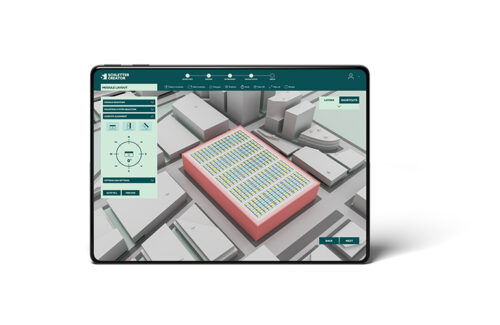Schletter Group, a global manufacturer of solar mounting systems, has launched the browser-based Schletter Creator for modeling solar projects with the company’s portfolio of racking products.

Credit: Schletter Group
“The Schletter Creator represents a major leap forward for our users, instantly placing us among the industry’s top-tier solutions in terms of speed and user experience,” said Florian Roos, CEO of Schletter Groups. “We can now offer our customers both premium-quality products and a state-of-the-art design tool that’s among the fastest and most innovative on the market.”
The browser- based tool is already being tested by key customers, and will be launched in Europe in April before expanding to markets in North America, the Middle East, Africa and Southeast Asia later this year.
The Schletter Creator lets users design PV systems for a variety roof shapes or types, with roof layouts created directly in Google Maps by marking the roof surface. After entering the roof pitch and building height, the system calculates the available installation area and suggests a panel layout based on the desired orientation. Unlike other design programs, which use a default building height of 10 m, the Schletter Creator requires users to input the actual building height.
“In practice, planning errors often arise because actual building heights are overlooked, leading to incorrect load calculations,” said Cedrik Zapfe, CTO of Schletter Group. “With the Schletter Creator, those errors are eliminated.”
Schletter Group claims users can design and finalize a standard rooftop system in under one minute. The platform also includes all commercially available PV modules and automatically applies region-specific wind and snow load calculations based on the entered postal code or city.
“Once the rollout is complete, we’ll cover approximately 97% of PV-compatible regions worldwide and integrate our entire Schletter product range,” Zapfe said. “This means the Schletter Creator can be used to design systems for virtually any roof at any time from anywhere in the world.”
Another key feature is the incorporation of aerodynamic calculations that account for the “group effect” among modules, which refers to how wind loads can vary within an array based on module positioning. Depending on the arrangement, wind forces may be lower on certain modules within a larger group compared to those in individual rows or along the edges — or the so-called “cone effect”. This new feature enables planning with reduced ballast requirements while maintaining structural integrity. Additionally, the Schletter Creator features an API interface, allowin
integration with all major inverter planning tools.
News item from Schletter Group


















